Chapter 41: Disappointing Cowpens USA
My visit to an unpleasant cousin in Cowpens, South Carolina, in 1974, reaching there after three months in Australia and a short visit to Los Angeles.
Let’s start at the beginning in London. This is from a letter to me family in Australia and dated February 6, 1974:
This will probably be my last letter before we arrive back in Australia. Just three weeks to go. Marvellous. The route is London, Amsterdam, Rome, Bahrain, Bangkok, Singapore (for 24 hours), Sydney and Melbourne.
Harley is getting excited about the trip, although it is a bit beyond his comprehension. A couple of day ago he drove Rosemary mad because he kept dragging clothes out of his drawers and gathering up all his other belongings and presenting them to her with the question “Going on the jumbo soon Mum?”
He’s going through a particularly interesting stage. He uses his imagination a great deal. I lost track this morning of the number of times I had to get into his “car” — in reality the settee — whereupon he “drove” me to the park for an imaginary game of football or golf. He’s also keen on on jigsaw puzzles, some of which are quite complicated. They given him many hours of pleasure.
Niall now has his first two top teeth, giving his mouth a grand total of five. He’s a very cheerful kid, but still shows no sign of crawling or even turning himself over.
As I’d had very little leave since joining the BBC World Service I was able to spend months in Australia. I don’t have any written record of the visit. All I can remember is that we had an enjoyable but often exhausting time travelling around the State of Victoria catching up with relatives and friends. We have a few videos made during the visit, but they would not be of any interest to those outside the family.
I had to return to London in March to resume my BBC job. I did so via the USA, largely because I had the opportunity to catch up with cousin Jim Richardson whom I’d never met. Rosemary was able to stay longer with Harley and Niall and didn’t get back to London until May.
AUSTRALIA TO LOS ANGELES
Extracts from the diary I wrote at the time:
I met our friend, Alma Kipner, and her mother, Ruby Moore, at Sydney Airport for the flight to Los Angeles. Alma’s mother, who is 72, had never been on an international flight before. We managed to get a few naps before landing in Honolulu where we had to go through USA customs and change planes. We spent nearly three hours in Honolulu, but most of this seemed to be spent going around and around in circles in airport transfer buses.
We switched from the Pan Am 707 to a Pan Am 747 jumbo. We got a beautiful view of the Hawaiian islands as we took off, and we got a good sight of Los Angeles as we landed there. The freeway system looked remarkable from the air.
Alma’s son, Steve Kipner, currently a member of the pop group “Friends”, was at the airport to meet us. He had a huge Chevrolet automatic two-door coupe. It was like a tank. He has a fabulous two-bedroom flat in the Hollywood Hills. It had a lovely view across LA.
After settling in, Steve and Daryl Cotton (a fellow member of “Friends”) took me for a drive to see Los Angeles by night. They drove me to a few places like Grauman’s Chinese Theatre (where the stars’ footprints are embedded in concrete) and past such spots as Dean Martin’s restaurant. Then they took me high into the hills to see the city by night. It was beautiful.
After a good eight hours sleep and breakfast, I had a quick sauna and a swim in Steve block of apartments. Marvellous.
Steve took Alma and Ruby to the airport — for Ruby to catch a flight to see her daughter living in Spokane, while I caught a United Airlines 727 to North Carolina where I was to be met by my father’s Scottish-born cousin, James “Jim” S. Richardson.
VISIT TO COWPENS, SOUTH CAROLINA
The town of Cowpens was founded near the site of the Battle of Cowpens fought during the Revolutionary War on January 17, 1781. Continental Army troops and colonial militia decisively defeated a crack British force – known as the Black Legion.
The battle drew its name from its site, pastureland and cow pens, reportedly known then as Hannah’s Cow-pens, used by frontier farmers in north-western South Carolina. Military historians regard the Battle of Cowpens as one of the most brilliant tactical operations ever fought on American soil.
More based on my diary…
My flight to Charlotte in North Carolina gave me a marvellous view of the landscape. Much of it was a mountainous desert area. Sometimes it looked like a moonscape, sometimes like a brown-orange surrealist painting. There appeared to be millions of rivulets having carved fascinating patterns out of the soil. Gradually the countryside became more fertile until we reached the massive mud flats of the Mississippi River. The plane made a stopover in Memphis which gave me an excellent low-level view of the flats.
It was interesting to hear the southern accents. It was clear that I was now in the heart of what might be termed “Y’all” country.
Jim Richardson was at the Charlotte Airport to meet me. So too was a mate of his who had come along for the drive after joining him earlier in the day at an international tennis tournament being played in Charlotte.
Jim is a small, wiry and round-shouldered man with a neat moustache. He told me that it was his 65th birthday and that he was born on the same day as Dad. Not true. He was born in the same year, but eight months earlier.
We drove in Jim’s giant Dodge Monte Carlo the 60 miles south across the South Carolina state border to Cowpens. He told me it had a top speed of about 120mph. This last ability is rather pointless, because since the fuel crisis, a 55mph speed limit has been imposed in America. Even at this modest speed, the car did only about 15 miles to the gallon. To cope, it had a 28-gallon fuel tank.
Although Jim and I had exchanged pleasantries in airmail letters to arrange my visit, I regret to say that within half-an-hour of meeting him I had grown to dislike him intensely and was already plotting my early departure. This dislike was confirmed as the visit went on, although in all fairness, he was very generous to me. The only trouble with this generosity was that there was a distinct impression that he was merely totting up credit and that he would lay claim to this at some later date. I can well understand why Jim and my Uncle Ted Richardson hated each other when Jim and his parents were living in Wonthaggi before moving to the United States. They are so alike it’s quite extraordinary. The only basic difference is that Ted died a poor man, while Jim has amassed a sizeable nest egg. At least that is what he told me no less than once every half hour.
Jim really gave me the creeps. He was not just a dreadful bore, there was also something about his personality which made me feel very uncomfortable. At one stage I suspected him of being a closet homosexual, but this may well have been a mistaken impression.
I was not to know at that stage that Jim was a “dry” alcoholic and had not been able to have children with his wife, Ella Bella, because of an injury received with the American marines in Italy in WW2. Ella Belle died, aged 60, in September 1972 after a brief illness. She left everything to Jim.
Jim told me a million times how good he was at sport. You name it and he was championship material. In fairness, I understand from some of the Cowpens locals that Jim was a very good tennis player for his age.
Jim found it almost impossible to avoid talking about money. He went on and on about all his wealthy friends. Everyone he knew, so he told me, was a big wheel in something or other. He was also a real wheeler-dealer. Every relationship appeared to be based on the “You Scratch My Back and I’ll Scratch Yours” ethic. He also hinted at the bribes he’d had to pay to senators and cops to get him and his friends off various hooks from time to time. There was no doubt a certain amount of exaggeration, but I heard enough to realise there is some truth in the claims.
Jim’s house is large and is on a four-acre block of land. It is expensively furnished and fitted out. His central heating system, for instance, was a mat of electrical wires buried in the ceiling plaster, and each room has its own thermostat. He has an antique business as a retirement interest and the house is packed with antiques.
Cowpens is a town with a population of 2,500. The houses of the better off are on very large blocks of land, although generally not as large as Jim Richardson’s which is four acres. This means the town is disproportionately large and scattered for such a small population.
In keeping with many communities in America, there are no front or dividing fences. Merely pegs in the ground or a line of trees. The town is in a former cotton-growing area, but its main sources of revenue now come from the local textile mill and from peach orchards. There appeared to be a fairly large negro population, but most of the blacks were confined to the poorer houses in what Jim Richardson referred to as “Nigra Town”.
The town has five churches, two of them Baptist. Jim is a former secretary of the larger of the two (naturally!) and he said it had an average Sunday attendance of 300. It even had two buses to collect the congregation.
Everyone, it seems, goes to church in Cowpens, but it appeared to have little to do with what I would regard as Christian morality. Everyone seemed to be robbing each other blind in the never-ending search for the Almighty Dollar. You could rob and defraud and expound racial hatred, but you would be okay in the eyes of God just so long as you didn’t sexually misbehave — or be found out doing so. Jim said the average Sunday collection at his church was around $2,000. The preacher lived in a huge modern house and owned two huge cars.
One day Jim took me to a hamburger joint for lunch. “It doesn’t look much,” he warned me, “but the hamburgers are great.” Well, he was certainly right on the first point. But to say it “doesn’t look much” was being over-kind. It looked -- and smelt -- awful. Years of greasy filth had accumulated on the walls and fixtures, and the only thing that was clean was the linoleum floor which, in some areas, had worn through to the underlay. When we arrived, the floor was awash with an overpowering disinfectant. Hardly the Ritz Hotel. The hamburgers, despite Jim Richardson’s confident predictions, were terrible. The meat appeared to have been watered down and had the consistency of a runny mince. The rolls weren’t toasted and consequently rapidly turned into a soggy mess. I couldn’t get out of the place quickly enough.
I had a better experience that evening when Jim took me and one of his lady friends out to dinner at a charcoal steak house. The friend was a Fine Ol’ Southern Widder Lady called Lee Gentry. What a fantastic name. Just like someone out of ‘Gone with the Wind’. She lived in an absolutely lovely Southern Colonial house in the nearest big town, Spartanburg. Her house was choc-a-bloc with beautiful antiques. Lee seemed very nice (well then, what’s she doing with Jim Richardson?) and had a gorgeous southern accent. Broad but very soft.
Everywhere we went Jim introduced me as “my cousin from Australia who is a newspaper correspondent in London and whose next posting will be to New York”. I reminded him several times that I worked for the BBC, but few people in Cowpens would have heard of the BBC, so there was no reflected glory in that. Jim must have felt that “a newspaper correspondent” sounded more impressive. I have no idea why he chose to claim that I was being posted to New York. I gave up bothering about it in the end.
In a discussion with Jim about violence in America, he produced a .32 automatic pistol from beside his bed and began waving it about. He assured me that it was fully loaded and that he also had a .22 automatic. He said that if ever he found anyone in his house he would “pump the whole gun into him”. “I killed a lot of people in the war so I know how to use these things,” he boasted. As he was in action with the Marines in WW2, this may well have been true.
On Sunday, Jim and I went next door to his sister-in-law for lunch. It was a huge meal. A beef and chicken main meal, followed by coconut pie, fruit salad and cake. Jim confided in me that his sister-in-law was after all his money, and having met the woman I wouldn’t be surprised. Her voice alone put me off. It was about as pleasant to listen to as a buzz saw.
I went for a stroll around Cowpens one evening while Jim was at a meeting and the only other people walking the streets were blacks. Jim angrily informed me that white people drove everywhere and that if the cops had come by they would probably have picked me up for questioning. “Only white trash and Nigras walk in this town,” he said. Whites won’t walk 50 yards if they can get out of it -- yet everyone is madly playing sport to try to keep fit. Some women I spoke to said that even though the car doors were locked they wouldn’t drive through one area at night because it was considered too dangerous.
One afternoon Jim took me for a drive to a nearby lake area to meet some of his wealthy friends. Fortunately his friends were not at home, so we just drove about the place. It was very beautiful, with all the blossom coming out with the arrival of spring.
The Americans are mad on ice. If you buy a glass of coke in a milk bar, you can bet that three quarters of it will be ice.
The Americans also love creating nonsense words or using six words when one will do. In one shop I visited, they were selling a red liquid billed as “The Coldest Drink in the World. It’s Frozenated”. And I was listening to one of the local radio stations and heard this gem in the weather report: “There will be near-zero chance or precipitation forming”. I guess what he meant to say was “rain is unlikely”.
The colour television in America is very poor. I saw several sets, both in Los Angeles and South Carolina, and there seemed to be a severe brown-green bias. Australia can be thankful it didn’t adopt the American colour system. [Since then American TV has been switched to a digital system and is technically hugely improved.]
Jim let me drive his car on one trip. Not long after we’d got going, though, he casually enquired if I had my international driving permit with me. I told him it was with my passport at his house. Whereupon he had me pull up immediately and took back the wheel. He informed me that failure to carry a licence on me could mean a statutory $20 fine plus certain arrest as a “suspicious person”.
On my last night in Cowpens, Jim took me to a local meeting of Alcoholics Anonymous. It was only moderately interesting because I’ve already covered similar AA meetings in my capacity as a reporter.
The next morning, before flying north to New York, Jim insisted on taking me to visit the Spartanburg newspaper office, which is regarded as an advanced operation, technically. The excuse for this visit was that Jim had been to the wedding of the girl who had married the boss’s son. The visit was a dead loss because all the newsroom was computerised and I hardly understood a thing about it. It was also embarrassing because Jim insisted on telling everyone he’d been to the wedding. Even the girl at reception got an earful.
From Spartanburg, Jim drove me up to Charlotte Airport to catch my plane a few days earlier than originally planned. I was looking forward to leaving him. Nevertheless, I didn’t entirely regret having made the visit because I witnessed a very interesting and revealing side of America.
Jim married a widow Amy Caldwell (née Fain) in April 1975. He died aged 70 in November 1979. She died aged 93 in June 2016.
NEW YORK STOPOVER
The flight to New York took just over an hour. There was a fair amount of cloud so I didn’t see much. I landed at La Guardia Airport and as I had a few hours up my sleeve, I decided to go into New York, which was only five miles away. There was so much smog about I could barely see the skyscrapers.
I took a bus from the airport, and it was the wildest bus ride I’ve ever been on. The driver just cut a swathe through the rest of the traffic. I got off at Grand Central Station and caught a bus down 42nd Street hoping to get a ride on the Staten Island Ferry. But I was out of luck. It wasn’t running. So I got a bus back, then walked to the Empire State Building. It cost $US1.60 to get the lift to the 102nd floor which is 1200 feet up. It was very windy on the observation platforms and visibility was limited to 10 miles because of the smog. Nevertheless, it was an interesting excursion. Contrary to expectation, everyone seemed friendly and helpful, but I was very wary and kept my money tucked away safely.
After a hamburger, I caught the bus back to La Guardia for a helicopter transfer to Kennedy Airport. It was a 30-seat craft. It vibrated terribly and was very noisy, but I got an interesting low-level view of New York’s suburbs.
At Kennedy Airport, there was a terrible hassle getting the luggage from one section of the terminal to the other. I put as much of my stuff as possible in a locker before checking in at the Pan Am desk, which was just as well. They considered charging me excess, but “seeing that’s all the luggage you’ve got”, let me off. Later while the checking clerk’s attention was diverted elsewhere I staggered back with all the other junk!
The Pan Am jumbo was crowded. The flight was rather rough in its initial stages, but we got into the jet stream and were swept along at close to 700mph. The films were ‘The Way it Was’ and ‘Sleeper’ -- the same films as were offered on both the Sydney-Honolulu and Honolulu-Los Angeles legs. Rather bad management, but the service and food were good. Breakfast was buffet style, something I’d not seen on a plane before. The food was all laid out in the galley and everyone queued for it. The plane touched down at Heathrow about 30 minutes early on a beautiful English morning.
Earlier chapters can be found HERE


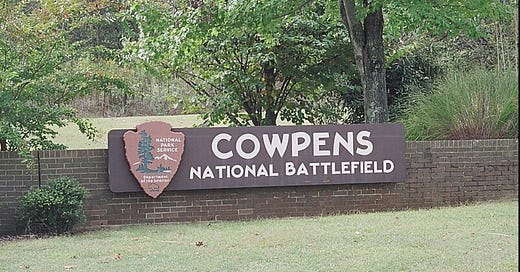



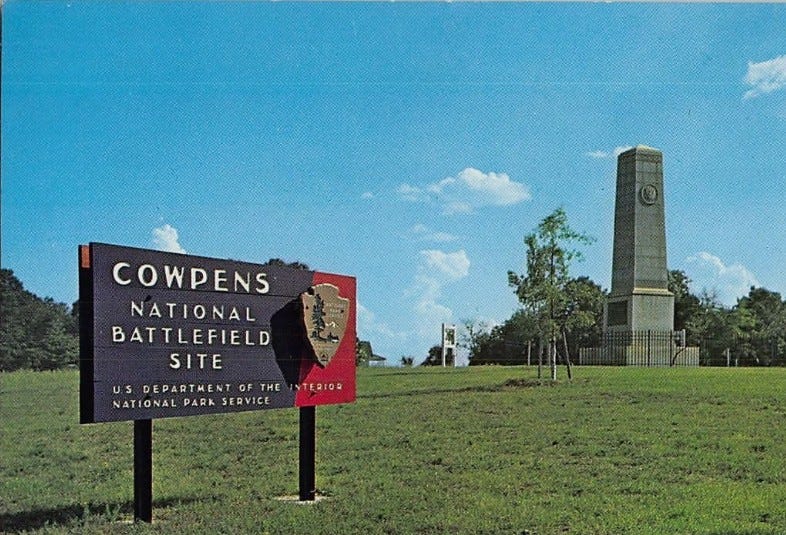
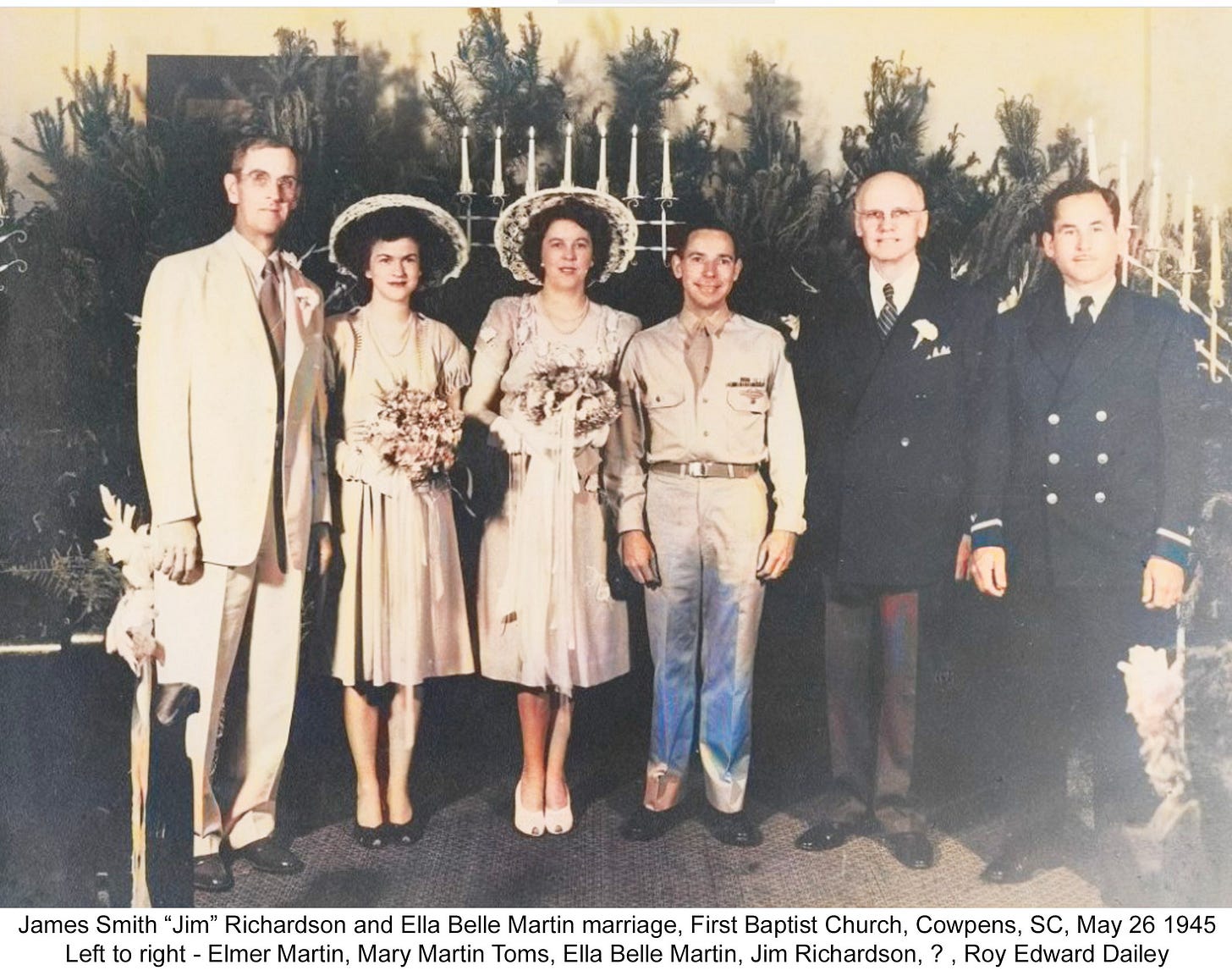

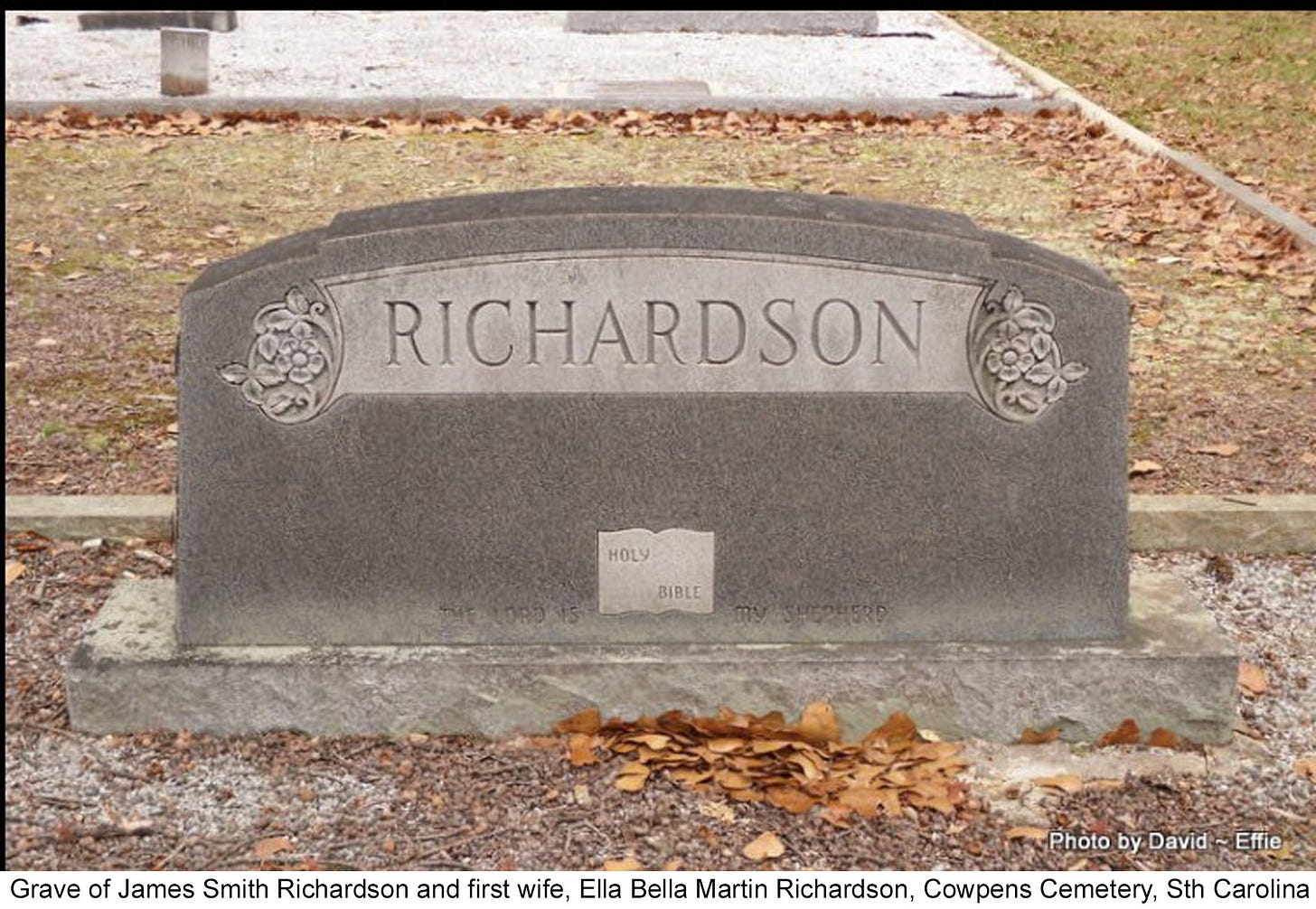
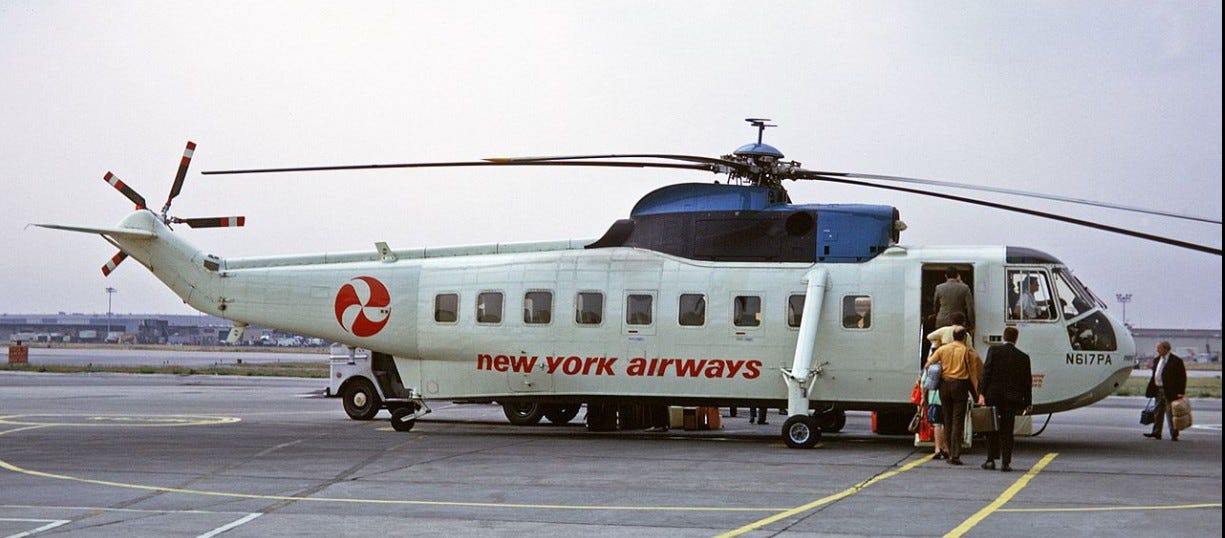
Interesting read again ..
Cheers to you and Rosemary.
Helen,Australia 🇦🇺
Notes on telephone conversations between Ian Richardson and Mrs Vivian Dailey, 5151 South Main Street, Cowpens, South Carolina. August 9 & 10, 1999.
(Vivian Dailey's name came up as a sister of Jim Richardson's first wife, Ella Belle, in an obituary published in the Spartanburg Herald. Ian Richardson found her phone number in the Cowpens phone directory, listed on the Internet.)
"I am 81-years-old and still a member of the Cowpens City Council. I am the only one of Ella Belle's family still surviving. Jim and Ella Belle and his second wife lived next door to me.
"I suppose you know Jim was an alcoholic. He stopped drinking for awhile, but he took it up again after Ella Belle died.
"Ella Belle met Jim when he was stationed at Camp Croft [a military camp] near Cowpens. They became engaged before he went to war, and she promised to marry him when he came back, no matter what, which she did. He and Ella Belle couldn't have children because - perhaps I shouldn't mention this - half his penis was shot off during the war.
"Jim could be nice when he wanted to be, but he was abusive and could be violent. He was mean to start with [when he wasn't drinking] and very mean with the drink. I wouldn't have had him off a Christmas tree if he'd been covered in diamonds!
"Jim's second wife, Amy, only married him for what she could get, and when he died, she took or sold everything. We never got any of Ella Belle's things. Jim treated her and her two sons very badly, and once the police had to be called when he got his guns out and threatened to shoot the three of them.
"I never had anything to do with his second wife. I didn't like her. She is now living in Spartanburg.
"Jim always talked big, but he only hung around with `white trash'."
(Although this description of Jim is one-sided, it is mostly consistent with my own experience of him and from what others have told me over the years. Ian Richardson)